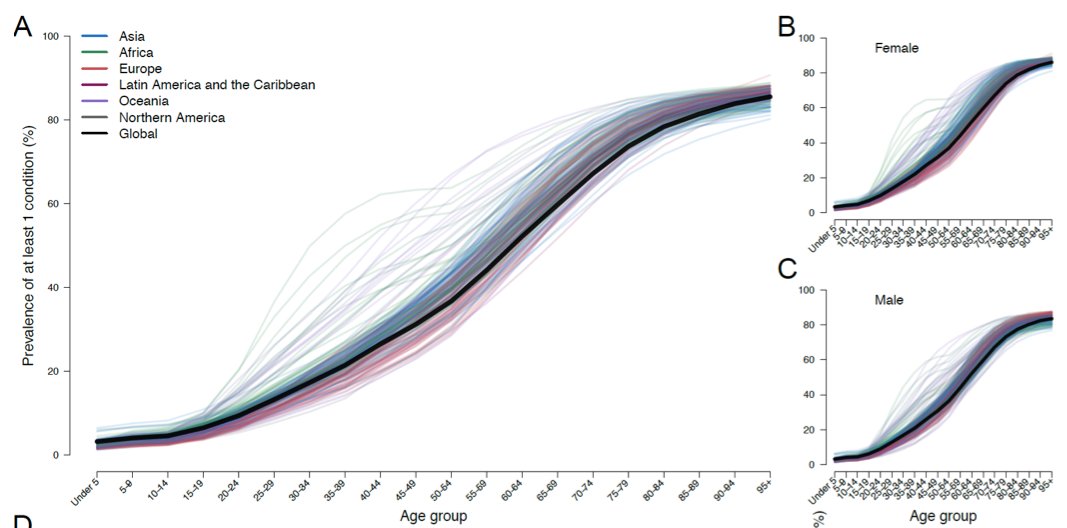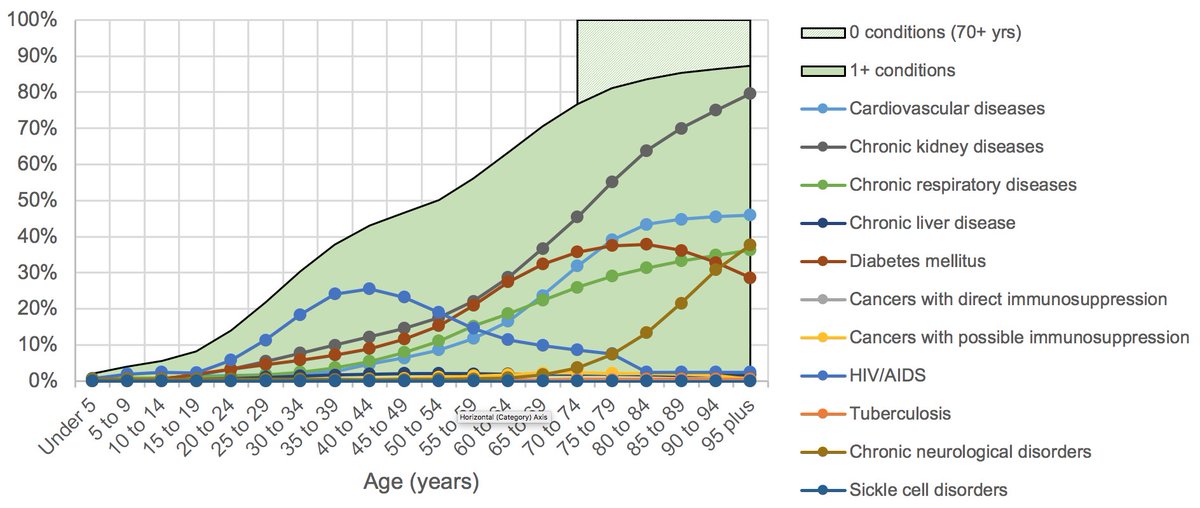There& #39;s good evidence that underlying conditions increase the risk of severe COVID-19 disease.
But where are those conditions distributed around the world?
With Andy Clark and others, we used the Global Burden of disease to estimate this.
NB: not peer reviewed (1/6)
But where are those conditions distributed around the world?
With Andy Clark and others, we used the Global Burden of disease to estimate this.
NB: not peer reviewed (1/6)
We calculated the % of each country population with 1 underlying condition, or more than 1 condition.
We estimated the age of these groups, to identify the fraction of the working age population at risk.
Why do we need to identify them?
NB: not yet peer reviewed (2/6)
We estimated the age of these groups, to identify the fraction of the working age population at risk.
Why do we need to identify them?
NB: not yet peer reviewed (2/6)
Risk groups can be targeted for "shielding" where at-risk individuals decrease their # of physical contacts to reduce the risk of transmission.
We previously projected the impact of age-based shielding policies in the UK. https://www.medrxiv.org/content/10.1101/2020.04.01.20049908v1
NB:">https://www.medrxiv.org/content/1... not yet peer reviewed (3/6)
We previously projected the impact of age-based shielding policies in the UK. https://www.medrxiv.org/content/10.1101/2020.04.01.20049908v1
NB:">https://www.medrxiv.org/content/1... not yet peer reviewed (3/6)
We created a dynamic tool so that countries can see the numbers at risk and needing shielding under different policies.
Age groups & underlying conditions can be selected for 188 countries.
The tool is available here: https://cmmid.github.io/topics/covid19/severity/Global_risk_factors.html
NB:">https://cmmid.github.io/topics/co... not yet peer reviewed (4/6)
Age groups & underlying conditions can be selected for 188 countries.
The tool is available here: https://cmmid.github.io/topics/covid19/severity/Global_risk_factors.html
NB:">https://cmmid.github.io/topics/co... not yet peer reviewed (4/6)
We found ~22% of the global population is at risk of severe COVID-19 disease due to underlying conditions.
The conditions (so far) were identified by UK & US as at risk of severe COVID-19 disease.
We don& #39;t yet know how much risk. We need to.
NB: not yet peer reviewed (5/6)
The conditions (so far) were identified by UK & US as at risk of severe COVID-19 disease.
We don& #39;t yet know how much risk. We need to.
NB: not yet peer reviewed (5/6)
Pre-print and the analysis tool available here: https://cmmid.github.io/topics/covid19/severity/Global_risk_factors.html
Thanks">https://cmmid.github.io/topics/co... to collaborators at @LSHTM @EdinburghUni Sun Yat-Sen University, @UW @IHME_UW @IAVI @UCL_IHI and @cmmid_lshtm.
NB: not yet peer reviewed. (6/6)
Thanks">https://cmmid.github.io/topics/co... to collaborators at @LSHTM @EdinburghUni Sun Yat-Sen University, @UW @IHME_UW @IAVI @UCL_IHI and @cmmid_lshtm.
NB: not yet peer reviewed. (6/6)

 Read on Twitter
Read on Twitter





